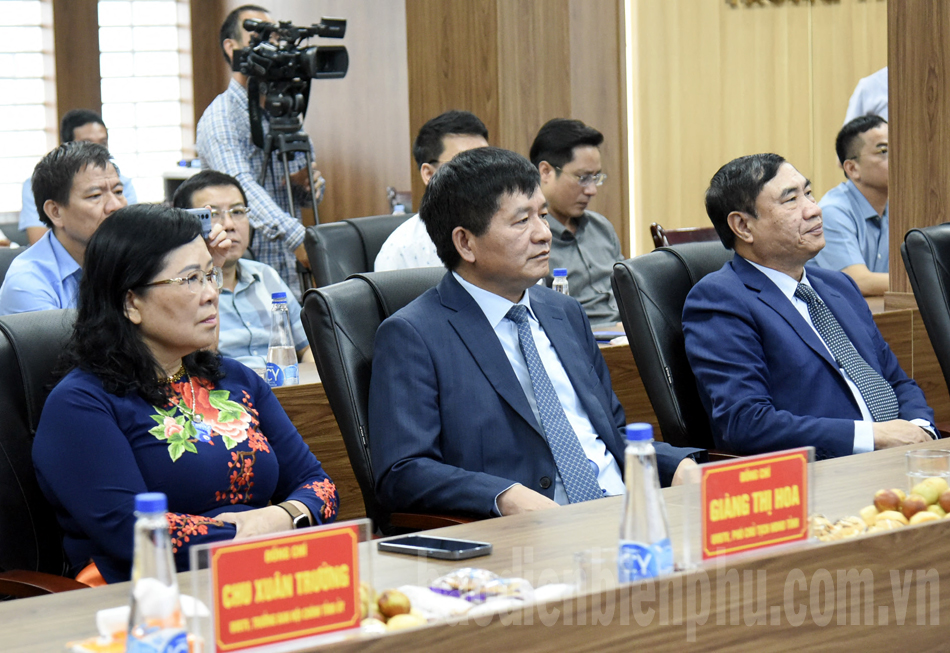
Delegates at the inauguration ceremony.
Following Resolution No. 13-NQ/TU issued on October 1, 2021, by the Provincial Party Standing Committee regarding the digital transformation of Điện Biên Province by 2025, with a vision towards 2030, the Provincial People's Committee approved the Smart City Technology Platform Project for Điện Biên Province.
The province's Intelligent Operations Centre (IOC) is now officially operational, integrating and providing services such as public information dissemination, field incident reporting, online information monitoring, security cameras, and databases from various sectors including information and communication, healthcare, agriculture, tourism, and urban planning.

Lê Thành Đô, Chairman of the Provincial People's Committee, speaks at the inauguration.
The provincial surveillance camera system is a crucial component of the IOC. To date, over 95 per cent of the system's workload has been completed. The system comprises two types of cameras: intelligent traffic management cameras and public security surveillance cameras.
The intelligent traffic management system includes 19 traffic monitoring and violation detection cameras, along with 6 vehicle counting cameras installed at key intersections and traffic lights across the city.
The public security surveillance system features three types of cameras: 11 high-altitude observation cameras, 34 facial recognition and crowd detection cameras, and 74 security monitoring cameras.

Provincial leaders and representatives of various departments and agencies press the button to launch the surveillance camera system.
Speaking at the inauguration, Chairman of the provincial People’s Committee Lê Thành Đô emphasised that the surveillance camera system not only helps government agencies quickly detect and handle unusual situations, but it also serves as an effective tool for crime prevention, traffic safety, urban management, and emergency response.
Importantly, the system will provide crucial data to support the decision-making and management activities of provincial leaders, he said.
To ensure the system operates effectively, he urged the Department of Information and Communication to continue advising the provincial People's Committee and the Steering Committee to complete and fully implement all remaining components of the project by 2024, according to the approved plan.
He also called for continued evaluation, connection, and expansion of the camera systems to serve socio-economic, social management, and crime prevention tasks.
.jpg)
Delegates listen to an explanation of the operational mechanisms of the surveillance camera system.
Regarding the provincial departments, agencies, and district, town, and city People's Committees, he stressed the responsibility to ensure that the camera systems under their management are operational and connected to the Level 1 system, forming a unified provincial surveillance network to support the province’s overall mission.




.jpg)
.jpg)
.jpg)

.jpg)
.jpg)


.jpg)
.jpg)

.jpg)




.jpg)
You have 500/500 characters left
Please enter 5 or more characters!!!